How to Pick an Interior Design Style and Stick to It, According to Designers
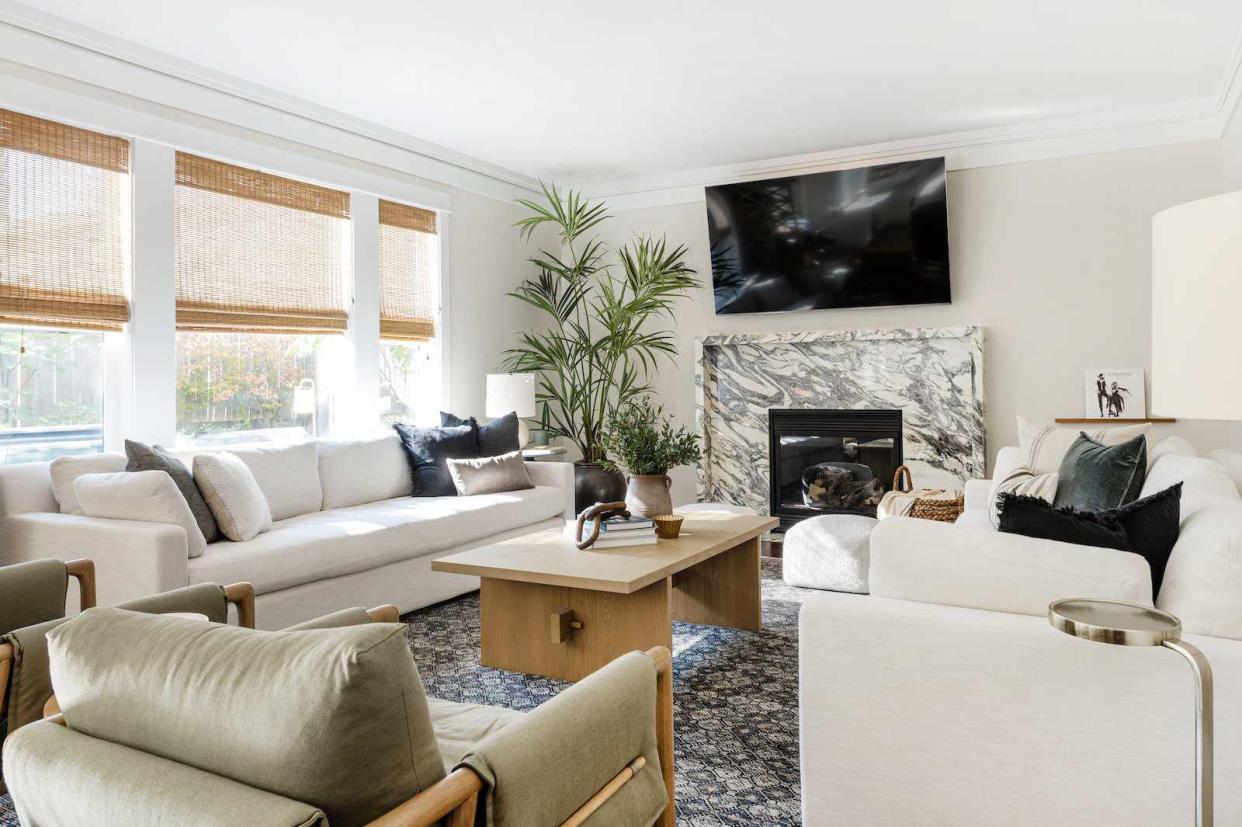
Designing your home is an exciting endeavor—that is until you realize just how many interior decorating styles there are. If you're firmly rooted in a particular style, happy designing. If you're feeling dizzy from the number of choices, don't fret.
Design chameleons may feel pulled by several different styles or folks just starting to delve into their abodes may need a refresher on what's out there.
We spoke to several experts on how to nail down a design style you love and find items that'll fit neatly into your preferred look. Prepare for a crash course on design ahead.
Designer-Approved Ways to Pick an Interior Design Style
You might already have a few design styles in mind, but if not, there's nothing to worry about.
"Ask yourself which materials and silhouettes you’re most naturally drawn to," designer Kathy Kuo of Kathy Kuo Home suggests, as this will start narrowing options down.
If deciding on just one style feels too restrictive, Kuo suggests combining two. She adds that this can "broaden your design horizons" and give you more freedom.
Below are some of the most popular design styles broken down with tips on how to achieve a similar aesthetic and stick to it.
Farmhouse and Modern Farmhouse Style
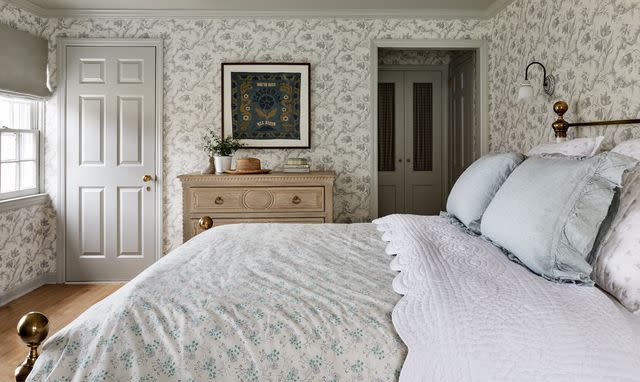
Country features are celebrated through farmhouse design and made more contemporary through its sister style, modern farmhouse. If you like this look but tend to fluctuate between styles, Kuo notes that this is one such aesthetic that blends nicely with French country.
What to Look for When Shopping
As the name says, you're pulling inspiration from farm-style houses. That means rustic, natural, and cozy are the name of the game. Aim for faded, distressed, or raw edge wood pieces for coffee and dining tables.
Lamps, shelves, and organizers featuring iron and glass will give the perfect contrast between utilitarian function (essential to a farmhouse) and modernism.
Furniture could be leather, linen, or textiles with a soft pattern like plaid. Rustic bed or couch frames will always contribute to that farmhouse edge, too.
Color Palettes
The best color palette for farmhouse and modern farmhouse styles include neutrals with a few pops of rust orange, slate blue, or olive green. You can lean into cooler or warmer neutrals, but when you select colors, try to only purchase items that match.
Finishing Touches
The final details of a farmhouse-inspired home can blend in or stand out. This could be something as simple as a vintage washboard hung up above a laundry room or it could be a few porcelain plates with chicken motifs dotted along the edge.
Also, consider woven or linen table runners and placemats. Kitchen essentials like pitchers and serving bowls, and bathroom must-haves like soap dispensers and towel cabinets are all opportunities to choose something with farmhouse flair.
Minimalist or Scandinavian Style
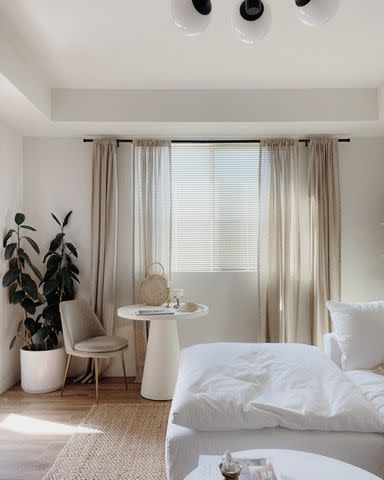
While Scandinavian and minimalist styles are different, they're often grouped. Both feature clean lines, quiet colors, a lack of clutter, excessive patterns or colors, and flashy objects.
Scandinavian is usually deemed cozier than minimalism and will incorporate soft textures and items that make the space visually feel warmer or hygge.
What to Look for When Shopping
Seek out furniture and decor with simple shapes. This doesn't mean boring, but rather items that aren't overly ornate or complicated.
Keep the walls of rooms white, cream, gray, or beige, and stick with appliances and furniture that are chic and unobtrusive. Cabinets, fixtures, shelves, hutches, and tables should have clean surfaces without intricate woodwork, fancy pulls, or bold colors.
Color Palettes
Neutrals and minimal colors are essential here and will differentiate minimalist or Scandinavian rooms from contemporary, coastal, or mid-century modern. Aim for black, white, beige, and gray tones. For a truly minimal home, keep bright hues out of the design.
Finishing Touches
Minimal homes shouldn't look or feel cluttered, so it's important to be selective about your finishing touches. Try a sculptural table lamp or a decorative object for a coffee table or bookshelf. In Scandinavian homes, add a stylish candle, faux fur rug, or a few neutral but cozy throw pillows.
Mid-Century Modern Style
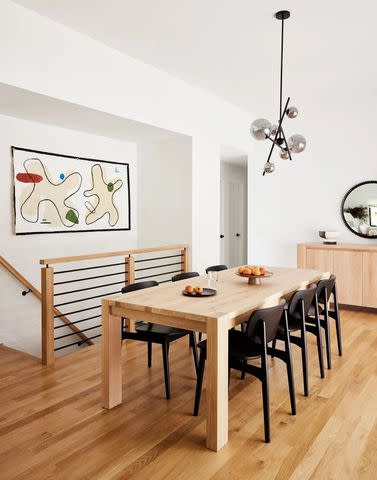
Midcentury modern design has long reigned as a popular style. It has minimalist elements mixed with more colorful and bold shapes and palettes.
Like minimalism, it features clean lines and sleek shapes, but its color scheme features jewel tones on top of neutrals. Its period was from the mid-'40s to the late '60s, but it's still just as beloved today.
What to Look for When Shopping
True midcentury modern furniture can still be scooped up today in antique and vintage shops. It's characterized by wood surfaces, curved shapes, and tapered legs. Even if you don't purchase items from that era, it's easy to find replicas and midcentury modern-inspired pieces.
Herringbone chairs, angular couches, Sputnik chandeliers, curved lamps, and Eames-inspired lounge chairs are all great places to start. Choose furniture with medium to dark wood tones and a mix of angled and rounded pieces.
Color Palettes
Neutrals will always have a place in midcentury modern homes, but those aren't the only colors. Earthy hues like avocado and burnt orange as well as jewel tones like teal and emerald will look fantastic in these spaces, too.
Finishing Touches
Think retro: vintage clocks from this design era always look cool when hung on a wall or a buffet table. High pile or shag carpets can be layered for a nod to the latter end of the period. Starburst frames or mirrors with wooden frames are equally as stylish and will fit right in, too.
Organic Style
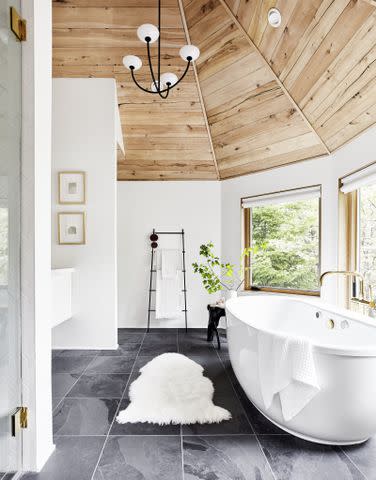
Design by Emily Henderson Design / Photo by Sara Ligorria-Tramp
Organic design has seen a resurgence in the last couple of years, but it's nearly as old as midcentury modern. It developed around the same time, but what makes it different from other aesthetics is its soft, nature-inspired shapes and textures.
It pulls a lot from the natural world through exposed wooden surfaces, indoor-outdoor spaces, or bibliophilic design decisions.
What to Look for When Shopping
Choose furniture and decorative objects in materials that feel closest to natural elements. This could be wood, stone, metal, or (faux) hides. The silhouettes of objects should also air on the side of rounded, fluid, and less structured
A question to consider when shopping is: does this help blend the outdoors with an indoor space? Anything that feels artificial, neon-colored, overly plastic or acrylic probably won't fit this kind of home best.
Color Palette
This is another design style where neutrals are involved. Aside from the standard black, gray, white, or beige ensemble, feel free to incorporate hues found outside, too. That could be deep browns, earthy greens, or blues reminiscent of water.
If your organic aesthetic leans more towards a boho style, add more saturated colors and prints or patterns alongside the more natural elements.
Finishing Touches
A plethora of plants, large freestanding gems or stones, and wooden side tables or trays are fabulous finishing touches in an organic space.
Look for cotton, wool, linen, and other natural textiles when it comes to adorning a couch or similar space where you spend a lot of time curled up.
Maximalist Style
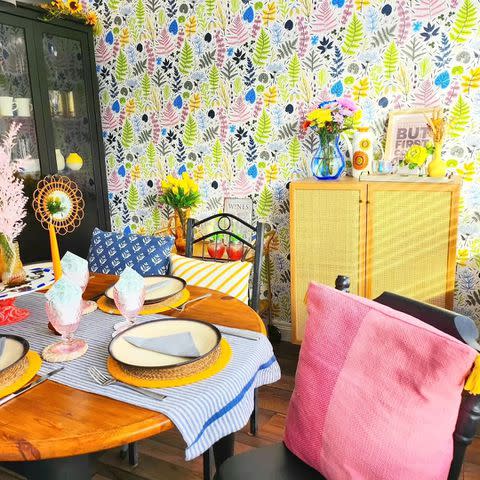
@my_interior_motive / Instagram
Maximalism turns minimalism on its head. Essentially the polar opposite, this design style brings in all the colors, textures, and patterns and mixes them. It creates a bold, vibrant space that never lacks personality.
The beauty of maximalism is it appeals to dwellers who want to mix multiple design styles or appreciate all sorts of colors. While it may sound like an over-the-top blend, it often looks impeccably chic.
What to Look for When Shopping
For big-ticket items, try to avoid neutral colors or plain materials. Rather than anchor a space, these can stick out like a sore thumb when the objects around it are swimming in patterns or bright colors.
Wallpaper, paint, and various textures like rattan or marble all have a home here. It all depends on the style you want to emulate through a maximalist lens.
Color Palettes
Color is everything in a maximalist space. Don't be afraid to mix a range of hues and shades. Like in any other space, it's still important to have a palette in mind to stay on theme.
If you want a neutral or two to keep an underlying level of cohesion, black is a super sleek choice. It's neutral, yes, but its deep saturation stands out just as much as a bright yellow or blue.
Finishing Touches
The finishing touches of a maximalist space are always fun to pick out. It could be a weird telephone you found while hunting at an antique store or an eclectic mix of posters you've collected over time.
Swap out boring white shades around lamps or pendant lights for something more colorful. Try adding saturated candles, candy-toned glassware, and exuberant artwork or painted botanicals.
Coastal Style
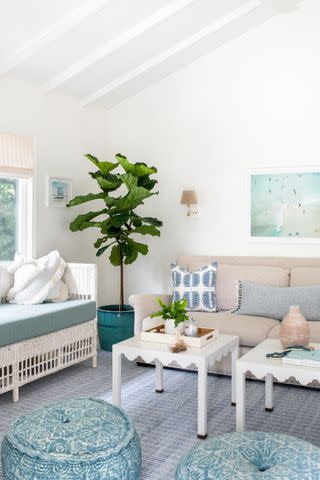
Whether or not you live by the sea, a coastal design style will make it feel like you do. This look has plenty of nautical or ocean-inspired touches and is often a modern or elevated take on what you'd expect to find in an actual beach house.
An offset of coastal style is Mediterranean and many of the trendier terms, such as coastal grandmother, coastal cowgirl, and tomato girl, come from this idea.
What to Look for When Shopping
Keep laidback and breezy top of mind when shopping for a coastal home. Furniture like couches, day beds, and accent chairs look fantastic when upholstered in linen, cotton, and other air fabrics.
Distressed or worn-out wood and washed-out fabrics are an intentional way of making items look well-loved and like they've lived a happy life near the sun and sand.
Layers of pillows, blankets, or rugs and poufs in different tones from your color palette will provide ample beachy flair, too.
Color Palettes
It won't come as a surprise that aquamarine, cobalt, teal, and other shades of blue normally make appearances in coastal homes. These are usually accents.
Common foundational colors in a beach-inspired space include white, cream, beige, and gray. Then bursts of blue and green can be added throughout. If you want to lean more towards nautical, try navy and charcoal.
Tropical-leaning spaces or lighter homes may want to bring in light blue, aqua, and pale or mint green.
Finishing Touches
For subtler coastal details, choose textures over literal symbols. This could be macrame pillows, a water blue rug, or even paint with a sand finish on the walls.
Sticking to a Style When It Starts Feeling Stale
Now that you've chosen a design style (or two) you love the look of, it'll be easier to maintain the appearance. That said, it's typical to get bored or tired of the same look.
Interior designer Jen Bienvenu, founder of J. Bienvenu Interiors, has some key tips.
Focus on contrast. She notes that a lick of paint can change so much. "Contrast your cream sofa against a dark chocolate-painted wall—suddenly the sofa and the room have new life," she says.
Purchase one item only. Beinvenu suggests buying just one object or fabric and try to creatively work it into your home.
Give yourself space. Visit spaces that inspire you and step away from your home to clear your head. "I once gathered concepts for paint schemes for a client by taking my children to the zoo and studying reptiles," Bienvenu says.
Read Next: 19 Traditional Decorating Ideas for Living Rooms
Read the original article on The Spruce.

